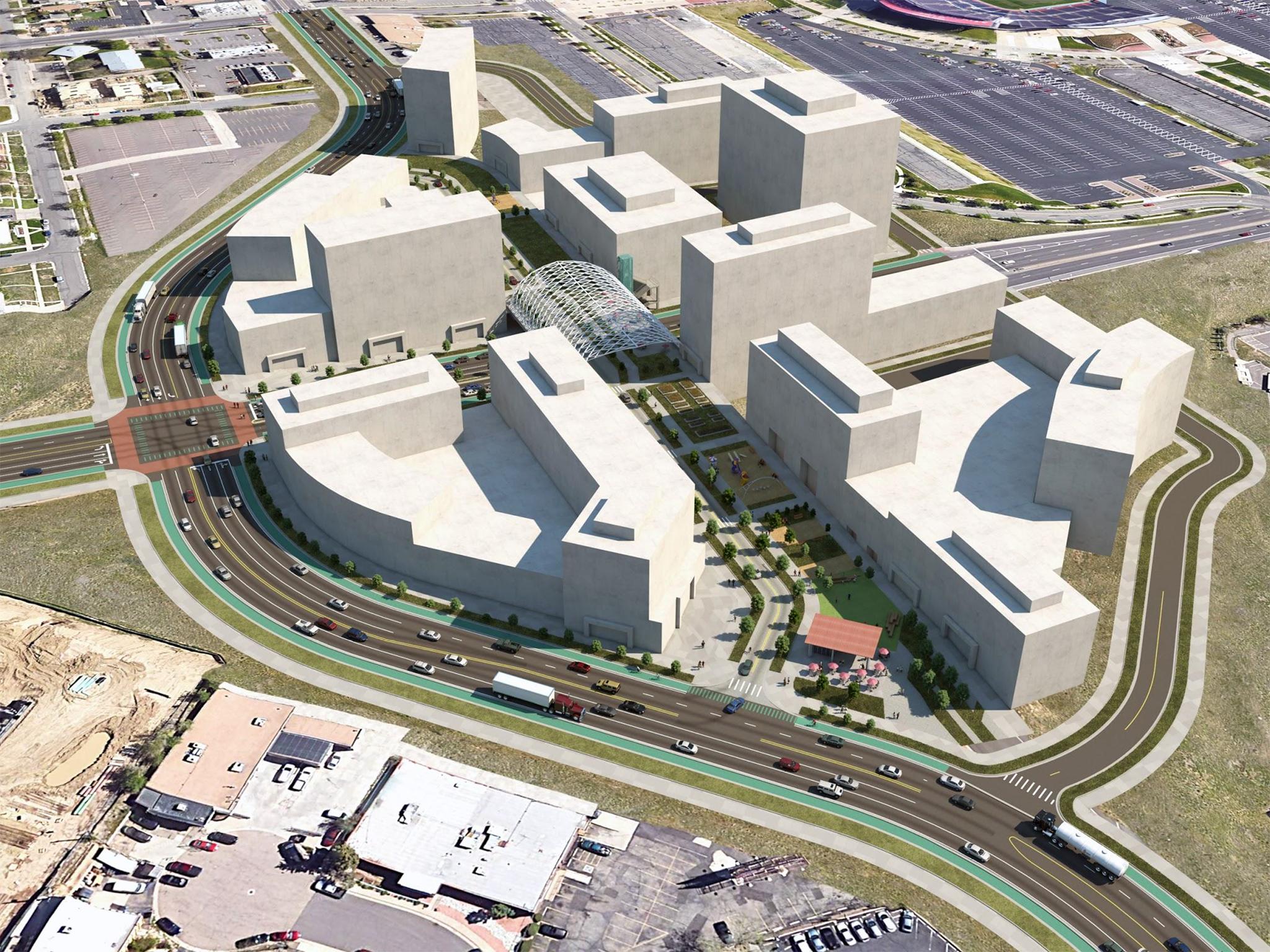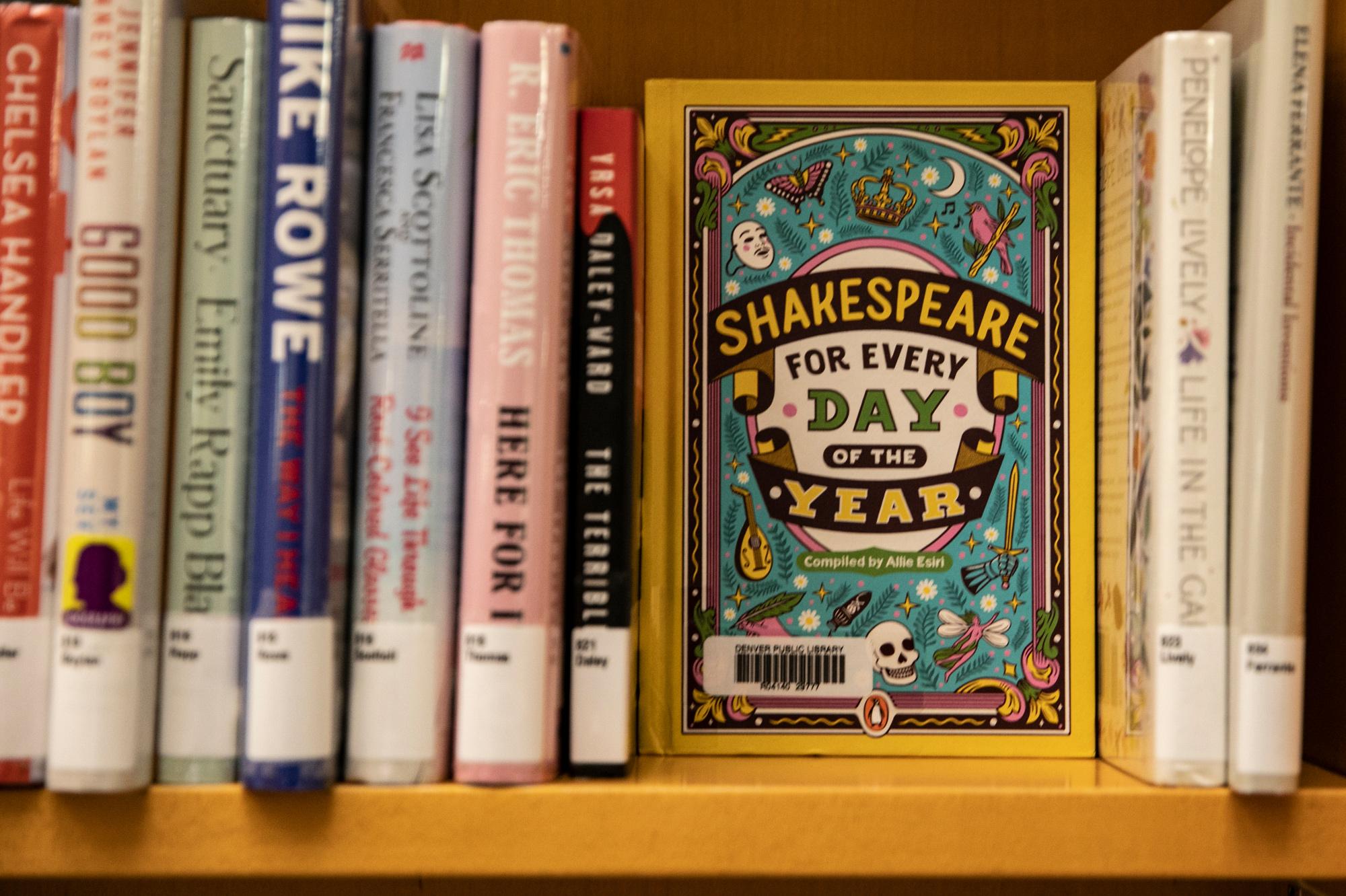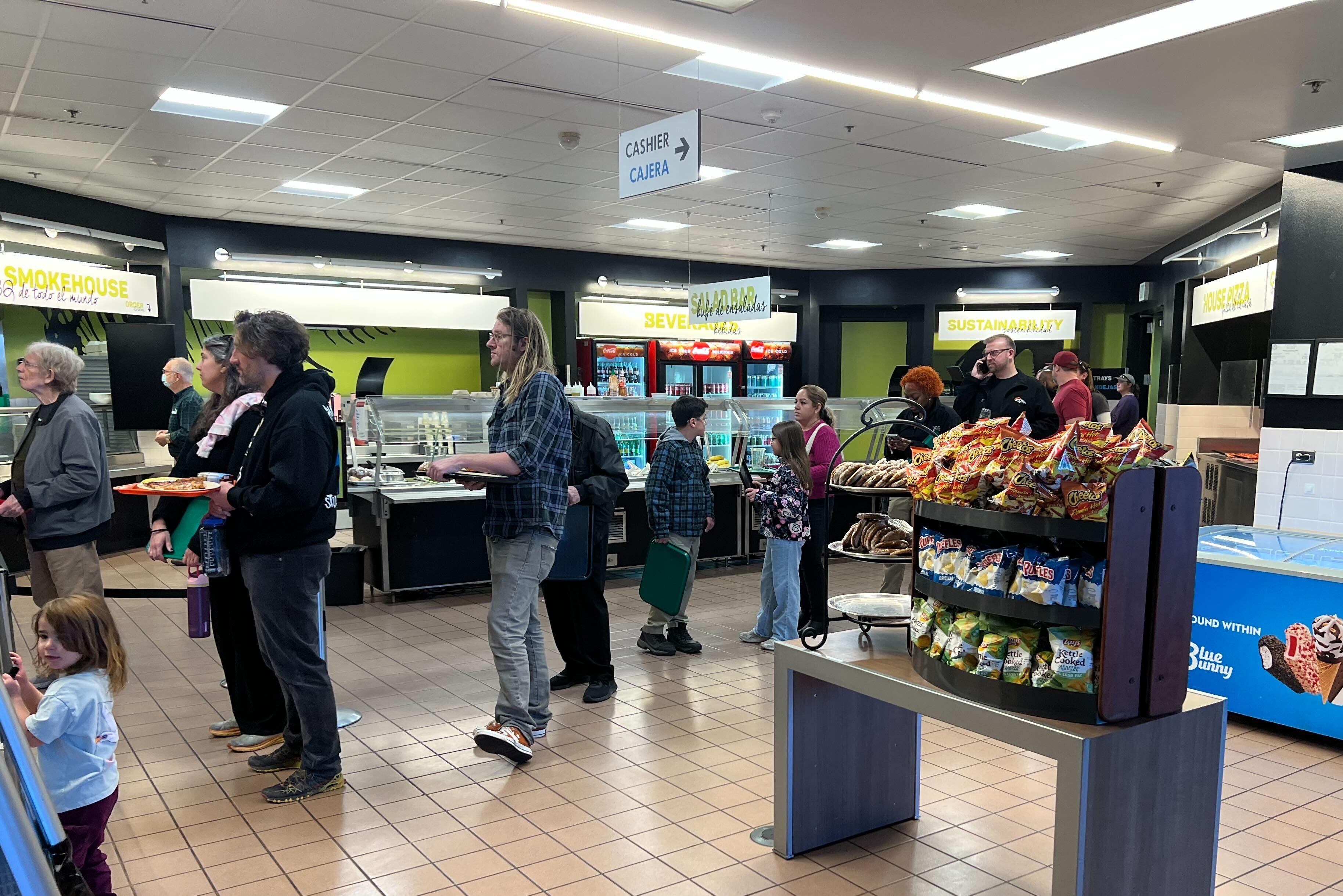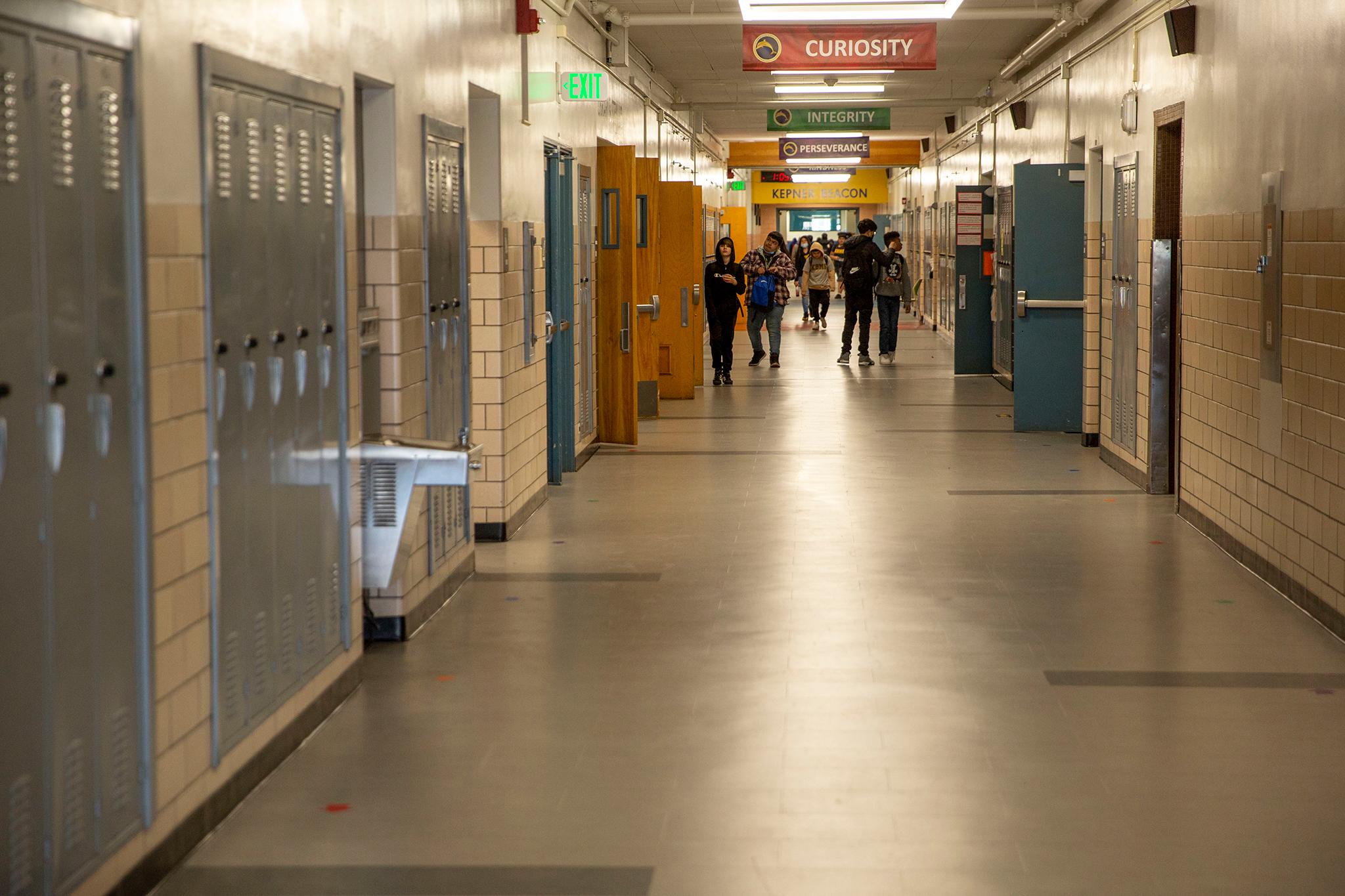It's called the "Colfax Clover." Have you heard of it? Maybe not, but you're probably familiar with its giant, twisting curves swooping down from Federal Boulevard to West Colfax out by the stadium.
Over the last year, community groups have been brainstorming ways to make this part of town safer and more connected, and the junction is seen by many neighbors as an impediment to both goals. So, a year ago, the West Colfax Business Improvement District (BID) started talking about solutions. They held events to stoke imaginations, collected input from residents and, last week, brought refined ideas to the public.
In a meeting that packed a theater at Alamo Drafthouse with neighbors and representatives from the city and CDOT, the BID held an informal vote. Overwhelmingly, the crowd selected an option that could result in a "linear" park on the Federal bridge that currently spans above Colfax.
Here's the idea as it stands: Snake Federal to the west so that it intersects with Colfax in a more normal way, save the bridge and get rid of the cloverleaf ramps to make room for development. The park could be a central point for a new destination -- what is tentatively being called "Federal West." ("FēWē," anyone?)
All in all, the cloverleaf takes up 29 acres, which some planning-minded people say is being wasted in the growing city.
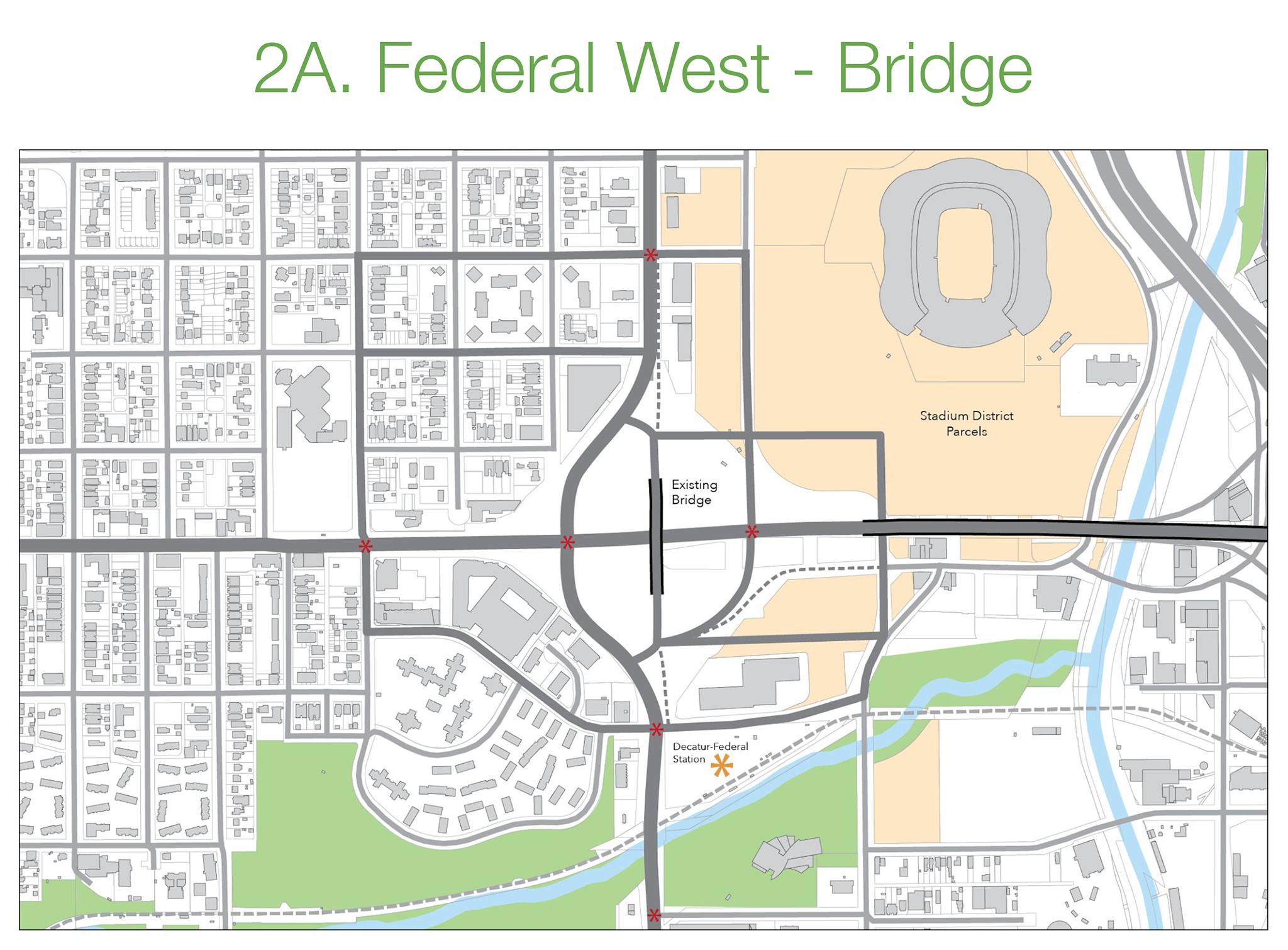
One way or another, there's a lot to do before something like this could become reality
The BID vote was by no means binding. But it shows what Denverites in West Colfax, Sun Valley and Jefferson Park are thinking about. Crucially, CDOT and the city have expressed interest in doing something. Councilwoman Debbie Ortega allocated $550,000 in the 2019 city budget to study options, and representatives from CDOT said the agency is on board. What will be done, exactly, is still up in the air, but the park concept is palatable because that bridge has another 70 years of life left in it.
Jordan Block is an urban planner with WSP, a huge company that does all sorts of things including design. While the West Colfax BID did present an elevated park concept in prior meetings, Block's was the brain behind this new version. It began as a scribble on a napkin that he drew during a meeting with the BID's director, Dan Shah, last summer. Block's involvement so far has been as an informal advisor.
The updated concept, he said, resolves some issues that prior designs did not. Federal's small shift to the west would help space out traffic lights, which helps mitigate traffic jams, slow cars and could make it easier for RTD buses to enter and exit their big terminal on Federal one block south. The design could also help ease construction impacts. Leaving the bridge means less to do, so there might be fewer work-related disruptions for residents and drivers. And, if Colfax and Federal cross at the same grade, pedestrian and bike passage might be easier, though it will still likely be a pretty large intersection.
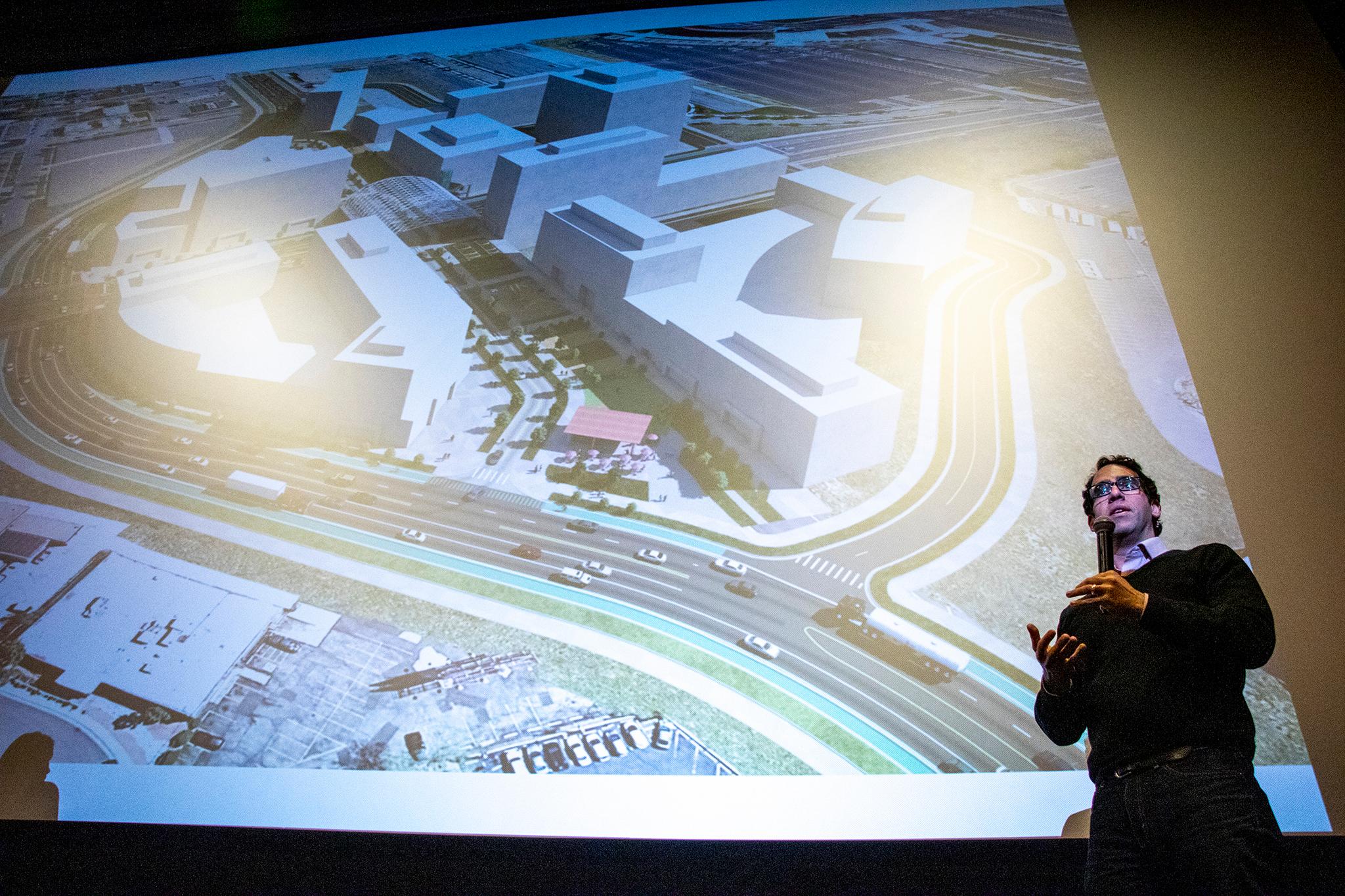
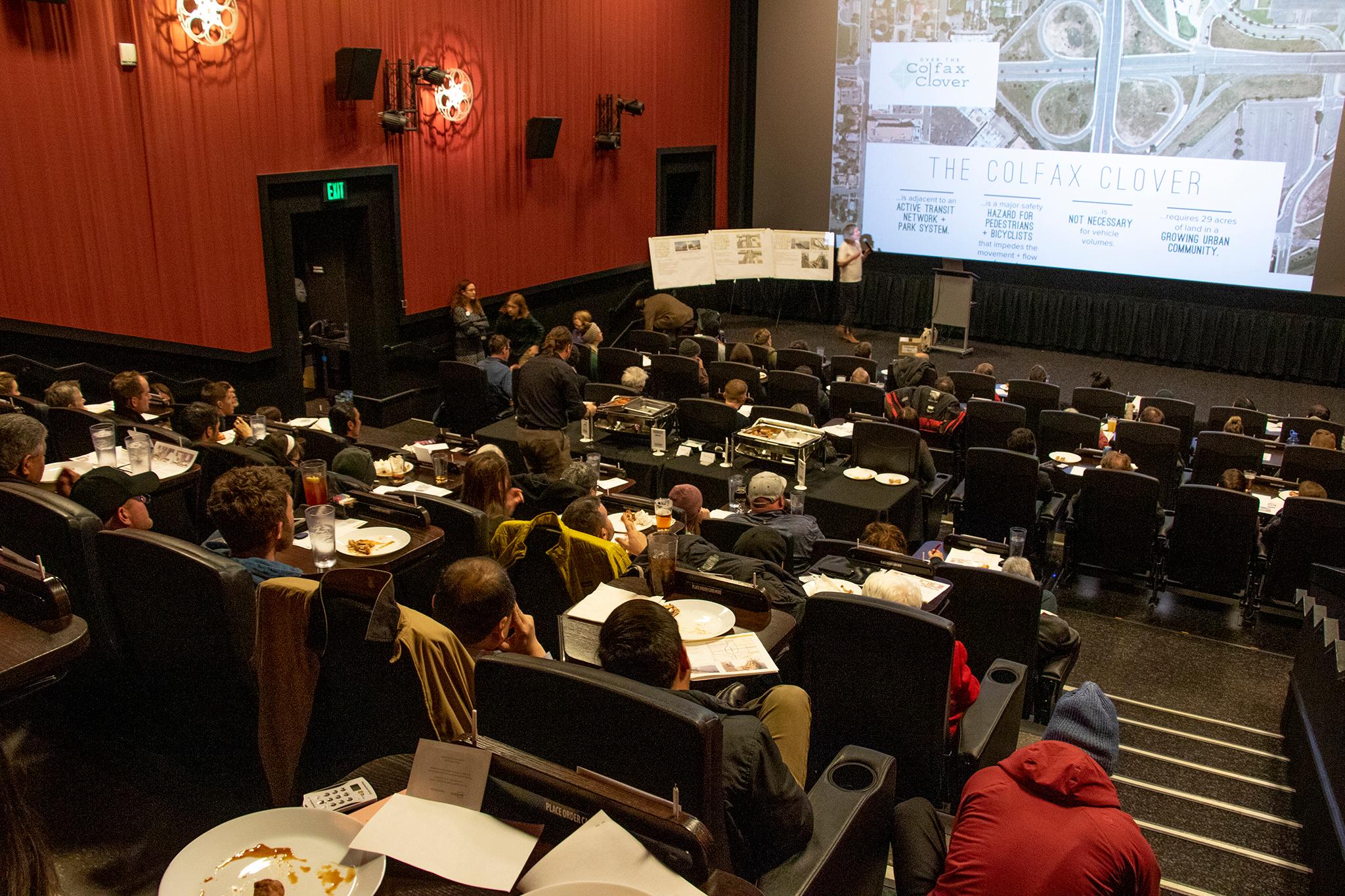
Block said this process, which was generated from grassroots interest, has been "incredible."
"Everyone's at the table at every conversation," he told Denverite. "Everyone has been engaged and stays engaged, and that's miraculous to me."
David Spector, director of CDOT's High-Performance Transportation Enterprise division, agreed that the process thus far has been great, but he added that there's a long road ahead.
"There is a lot that would need to occur," he said, "but there's a lot of momentum."
For the site to be developed, the city and CDOT will have to study drainage, environmental issues and entitlements. The fact that CDOT owns the land is also an unusual aspect in this scenario. Spector said he couldn't think of another project this big that so heavily leaned on the agency's involvement, though he wasn't sure if it would necessarily streamline the process.
Shah said cost will ultimately be "the single biggest driver" for any future green light and has yet to be studied. The city will also likely have to amend their Decatur-Federal Station area plan that would allow for rezoning. Then, he said, project leaders will probably have to lock down a master developer to make sure the site has a unified vision moving forward.
Last October, Shah helped facilitate a developer forum and said there's a lot of interest in the area. The bridge idea adds another alluring aspect.
Cool parks are cool, but many stakeholders say this is all about safety
Traffic-related fatalities are 20 times more likely on Federal Boulevard than they are on other streets in the city, and residents know this. As a result, a lot of people living nearby tend to avoid the Clover on foot or by bike.
Jeanne Granville, president of the Sun Valley Community Coalition, said this plays into some inequity, especially for Sun Valley residents.
"A lot of our families don't drive," she said, so the interchange is "psychologically this huge barrier sitting in the middle of where many of them are going," be that to school or to buy groceries.
"Right now kids are just told: you don't go here," she said.
It's the reason Councilwoman Ortega helped allocate money to study new options. She learned about the clover project when she was working on an art installation a block or so south that was meant to bring attention to pedestrian access.
"I support the idea of what they're trying to do," she said, "greater change for the area that would truly address the pedestrian safety issue."
Spector, too, said safety is a "big driver" of CDOT's interest in participating on a redesign.
"This intersection is crazy," he said. "I've seen some nutty stuff there with pedestrians and autos."
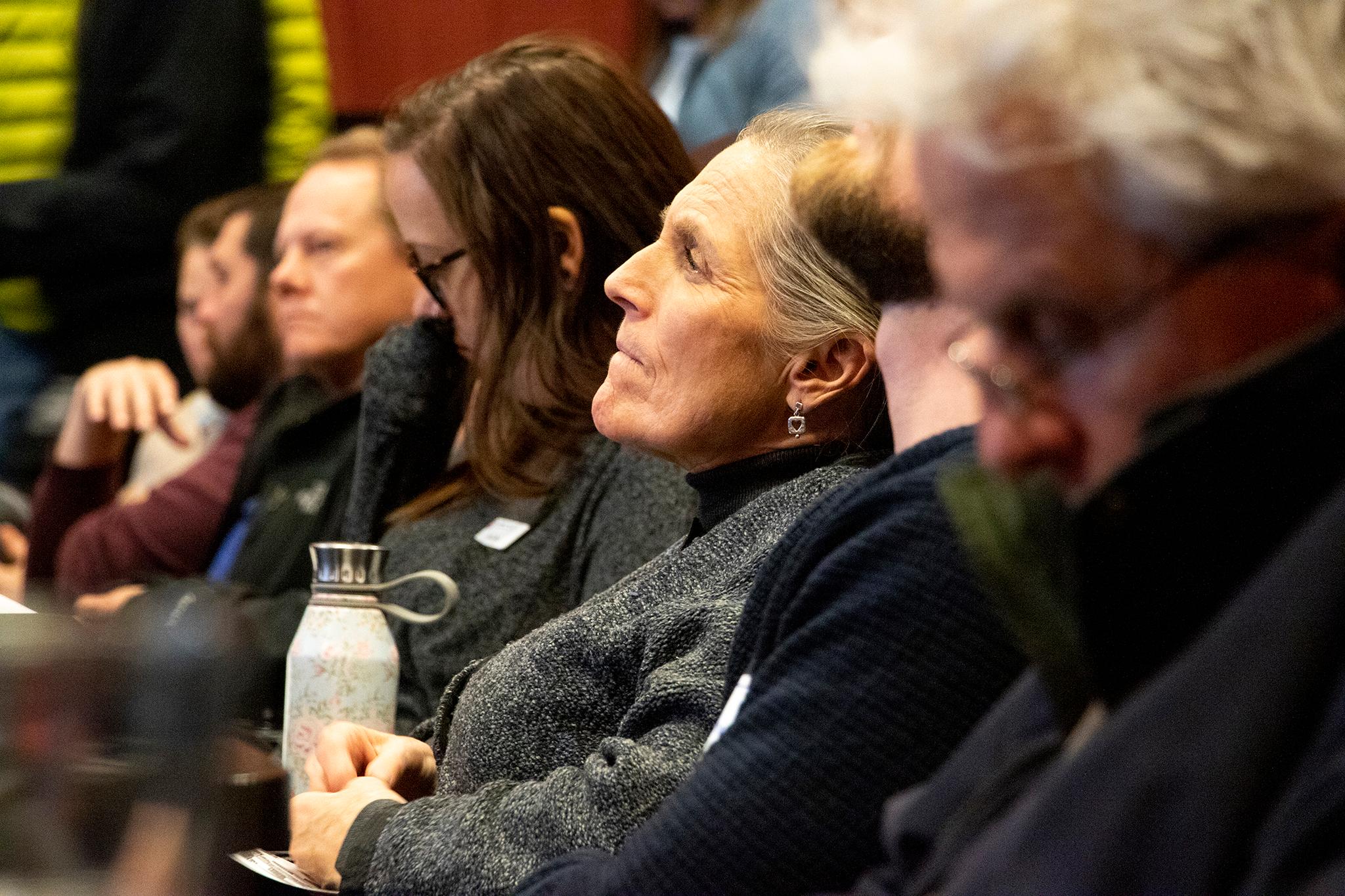
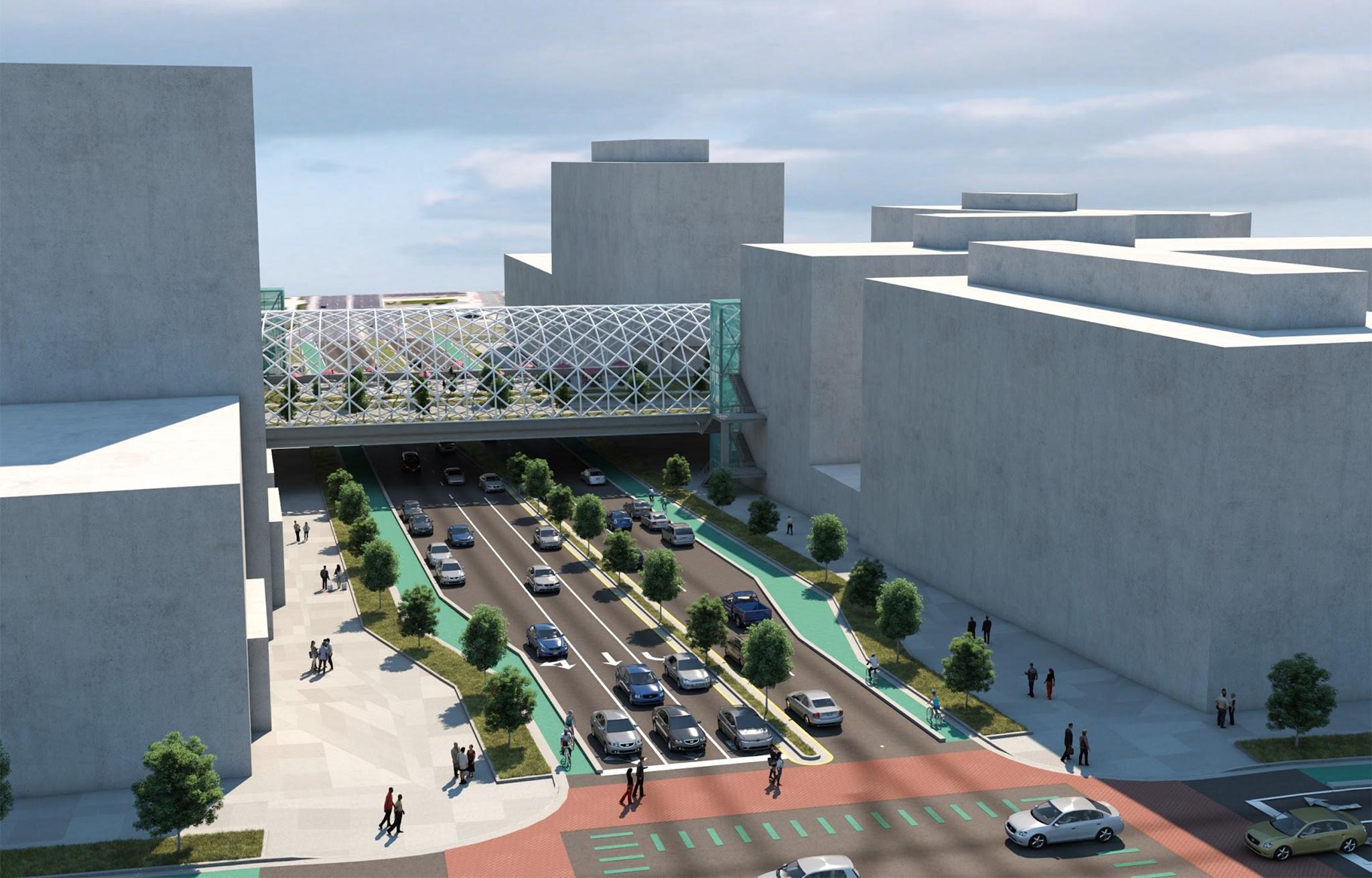
So safety affects connectivity, which impacts access and the economy. Make the street passable, Shah said, and the west side will flourish as the rest of the city has.
The project, elevated park or not, "takes on what separates West Colfax from downtown," he said. "It could be a major deal for the area, for the district, for the neighborhood and for the community."

